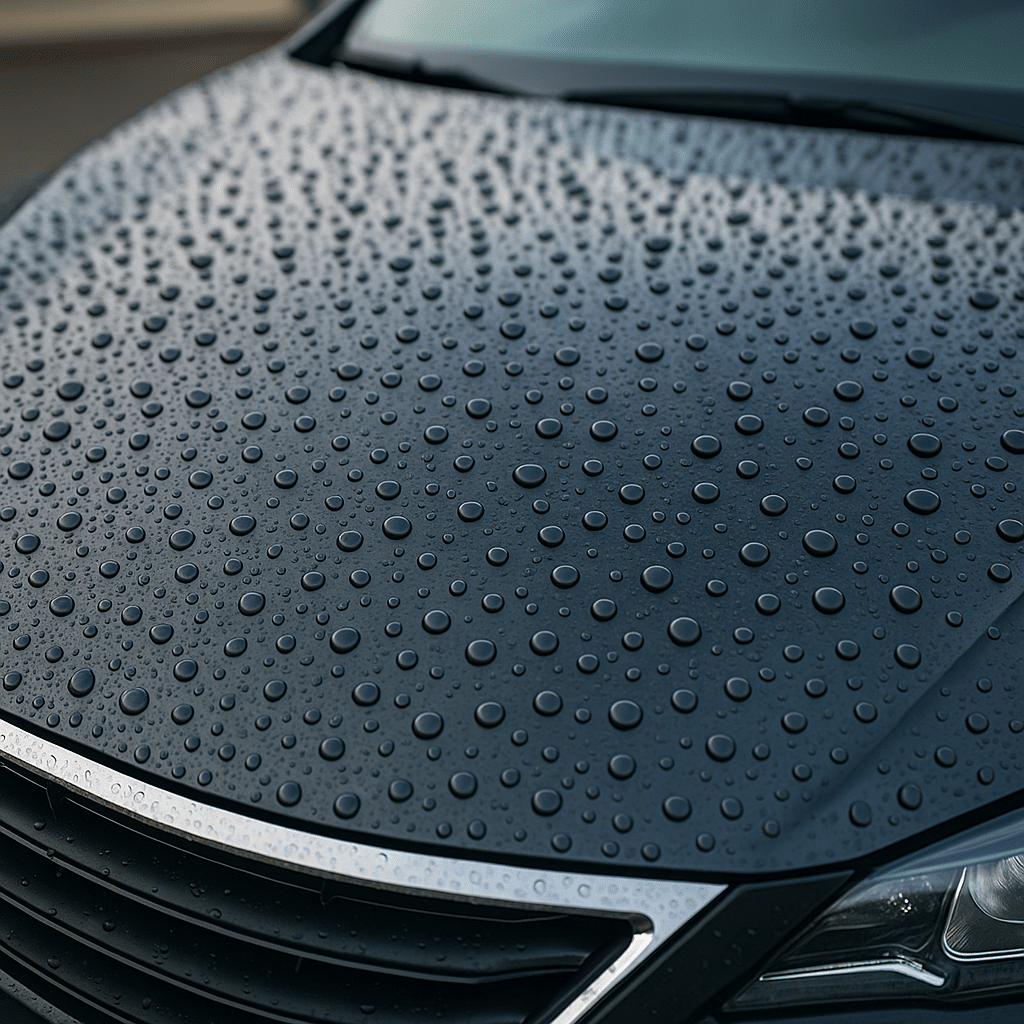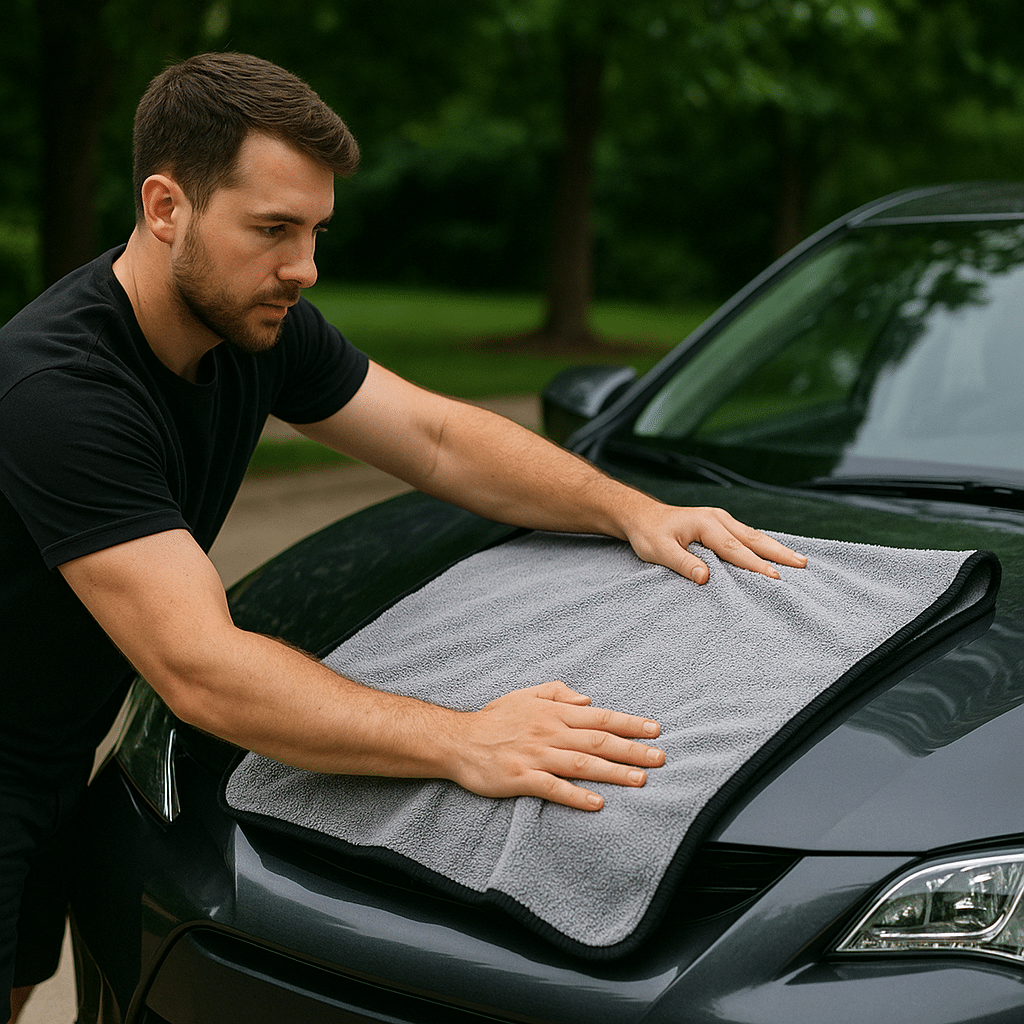A ceramic coating isn’t a “set-and-forget” shield. It’s a high-tech clear armor that still needs the right care to stay hydrophobic, glossy, and scratch-resistant. Follow the blueprint below and your coating will look fresh for five or more years—no matter how harsh the weather gets.

1. Why Proper Maintenance Matters
Even premium nano-ceramic layers can degrade when exposed to strong UV, airborne contaminants, and heavy rain. Routine maintenance:
- Preserves the slick surface so dirt can’t stick.
- Prevents alkaline or acidic chemicals from etching the coating.
- Keeps the self-cleaning water-beading effect alive instead of turning to dull sheeting.
2. Weekly Wash Workflow
| Step | Why It Matters | Key Checkpoints |
|---|---|---|
| Cool Paint & Shade | Hot panels flash-dry soap into water spots. | Wash at dawn, dusk, or inside a garage. |
| Pre-Rinse / Foam Cannon | Loosens grit before you touch the paint. | Use a pH-neutral snow foam designed for coated cars. |
| Two-Bucket Method | Keeps your wash mitt grit-free, avoiding swirls. | Rinse the mitt in the clear-water bucket after every pass. |
| Gentle Shampoo | Harsh detergents strip protective layers. | Stick to pH-neutral car shampoos labeled “coating safe.” |
| Low-Pressure Rinse | High PSI can lift edges of trim or protective films. | Hold the nozzle at least 12 in / 30 cm away and stay under 1 500 PSI. |
| Microfiber “Sheet” Dry | Prevents calcium spots and micro-marring. | Use a plush towel; blot or glide lightly rather than dragging. |
Pro Tip
Skip the corner automatic brush wash—its stiff bristles and alkaline soaps can dull a ceramic coating in weeks. Hand washing or an approved rinseless method is the safest approach.
3. Monthly Boosters & Decontamination
- SiO₂ Shampoo or Spray Topper – Adds a sacrificial layer that revives gloss and water beading. Use every fourth wash.
- Iron Fallout Remover – Dissolves embedded brake-dust particles that regular soap can’t reach. Spray on cool paint, wait for the chemical reaction to finish (color change), then rinse thoroughly. Apply every three months.
- Graphene or Silica Detail Spray – Enhances UV protection for long highway drives. Mist panel-by-panel after drying and buff gently with a clean microfiber towel.
4. What to Avoid at All Costs
| Hazard | Effect on Coating | Safer Alternative |
|---|---|---|
| Brush automatic car wash | Swirls, scratches, dull gloss | Use touch-free washes only when hand washing is impossible |
| Strong acidic or alkaline wheel cleaner on paint | Etches the SiO₂ layer | Choose pH-balanced soap or a mild wheel cleaner designed for coated rims |
| Household dish soap | Degreases and strips protective layers | Use automotive shampoos that are pH-neutral |
| Drying in direct sunlight | Water spots can fuse into the clear coat | Dry in shade or use a filtered-air blower first |
5. Six-Month Health Check
Even the most diligent DIY routine benefits from a professional inspection twice a year. A typical service visit includes:
- LED Inspection Light – Reveals early water-spot etching or wash-induced swirls.
- Decontamination Wash – Removes iron, tar, and organic films with safe chemicals and clay towels.
- Top-Up Coat – An optional spray sealant that can extend the life of the underlying ceramic layer by another six to twelve months.

6. Frequently Asked Questions
How soon after installation can I wash my car?
Wait seven days for a full cure. If absolutely necessary, a gentle hose rinse with no soap is acceptable.
Do I still need to wax?
No. Modern ceramics outperform wax in durability and chemical resistance. In fact, traditional wax can mute the coating’s hydrophobic behavior.
Can I clay a ceramic-coated car?
Yes, but use a soft synthetic clay towel with plenty of lubricant. Aggressive natural clay bars can leave micro-marring.
What if water no longer beads?
Start with a decontamination wash followed by a silica spray topper. If gloss is still flat, schedule a professional inspection—your coating may be nearing the end of its life cycle.
7. Key Takeaways
- Wash weekly with a two-bucket, pH-neutral routine.
- Avoid brush-style and harsh-chemical automatic washes.
- Boost hydrophobics monthly with silica-based shampoos or sprays.
- Book a six-month refresh to maintain long-term performance and warranty coverage.
